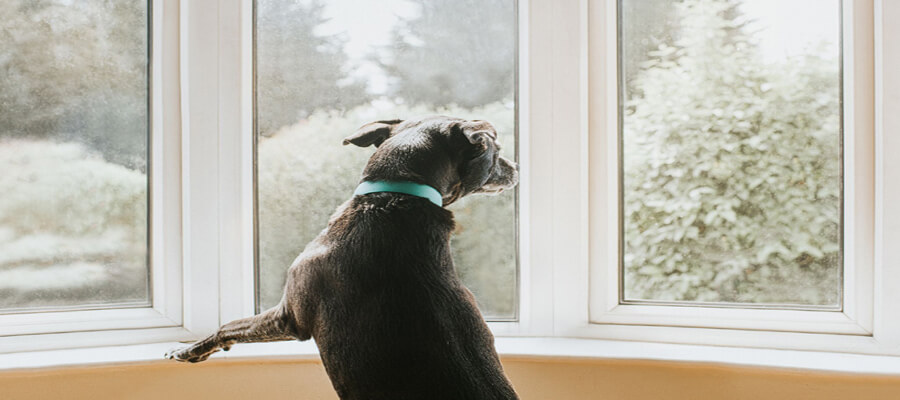
Updated on | by Critter Nets - Blogs
How to Recognize Signs of Anxiety and Depression in Dogs
Recognize Signs of Anxiety and Depression in Dogs
Introduction
Just like humans, dogs can experience feelings of anxiety and depression. These emotional states can arise from various factors such as changes in their environment, loss of a companion, or even health issues. As a loving pet owner, it's essential to recognize the signs of anxiety and depression in your dog so that you can provide the appropriate support and care. In this guide, we will explore the symptoms, potential causes, and effective strategies to help your furry friend overcome these challenges.
1. Understanding Canine Anxiety and Depression
A. The Importance of Mental Health in Dogs
Essentials for Your Newly Adopted Pet
Welcoming a shelter pet into your life is a beautiful journey. Here are some handpicked items to help your new friend feel safe, loved, and right at home:
Mental health is just as important for dogs as it is for humans. Emotional distress can lead to behavioral problems and even affect their physical health. Understanding the differences between anxiety and depression can help you address your dog's needs effectively.
B. Common Causes of Anxiety and Depression
- Environmental Changes: Moving to a new home, new family members, or changes in routine can trigger anxiety.
- Loss or Grief: The death of another pet or a family member can lead to feelings of depression.
- Health Issues: Chronic pain, illness, or hormonal changes can contribute to behavioral changes.
2. Signs of Anxiety in Dogs
Recognizing anxiety in dogs can be challenging, as they cannot vocalize their feelings. Here are some common signs to watch for:
A. Excessive Barking or Whining
Dogs may vocalize more than usual when they are anxious. If your dog is barking or whining excessively, it may be a sign that they are feeling stressed or anxious.
B. Destructive Behavior
An anxious dog might chew on furniture, dig in the yard, or engage in other destructive behaviors as a way to cope with their feelings.
C. Pacing or Restlessness
If your dog seems unable to settle down and is pacing or constantly moving around, this can indicate anxiety.
D. Hiding or Withdrawal
Dogs that feel anxious may seek out hiding spots or isolate themselves from family members.
E. Aggression
In some cases, anxiety can manifest as aggression. If your dog shows sudden aggression towards people or other animals, it may be a sign of anxiety.
3. Signs of Depression in Dogs
Dogs can also experience symptoms of depression. Here are some signs to look for:
A. Changes in Appetite
A depressed dog may lose interest in food or treats. Conversely, they may also overeat as a form of comfort.
B. Lethargy
If your dog seems less active and is sleeping more than usual, it could be a sign of depression.
C. Loss of Interest in Activities
A once playful dog may lose interest in activities they previously enjoyed, such as playing fetch or going for walks.
D. Changes in Grooming Habits
Depressed dogs may neglect grooming themselves, resulting in a disheveled or unkempt appearance.
E. Unexplained Agitation or Irritability
Just like humans, dogs can also show agitation or irritability when they are feeling down. If your dog seems more easily annoyed or irritable than usual, it could indicate underlying issues.
4. How to Help Your Dog
Recognizing signs of anxiety and depression is the first step. Here are ways you can support your dog through these challenges:
A. Consult a Veterinarian
If you notice signs of anxiety or depression, the first step is to consult your veterinarian. They can rule out any underlying health issues and provide recommendations for treatment.
B. Create a Safe Space
Provide a safe and comfortable space where your dog can retreat when feeling anxious. This could be a cozy bed or a designated room with their favorite toys.
C. Establish a Routine
Dogs thrive on routine. Try to keep a consistent schedule for feeding, walks, and playtime to help your dog feel more secure.
D. Engage in Regular Exercise
Physical activity can help alleviate anxiety and depression in dogs. Regular walks, play sessions, and mental stimulation through puzzles and games can improve their mood.
E. Consider Training and Behavior Modification
Working with a professional dog trainer or behaviorist can help address anxiety-related behaviors and improve your dog's coping skills.
F. Explore Natural Remedies and Supplements
Some dogs may benefit from natural remedies, such as calming supplements or pheromone diffusers. Consult with your veterinarian for appropriate options.
G. Be Patient and Supportive
Above all, be patient with your dog as they navigate their feelings. Offer them plenty of love and reassurance to help them through their tough times.
Conclusion
Recognizing the signs of anxiety and depression in dogs is crucial for providing them with the support they need. By being attentive to changes in behavior and working closely with your veterinarian, you can help your furry friend overcome these emotional challenges. Remember that a happy dog is a healthy dog, and your love and understanding can make a significant difference in their well-being.
Affiliate Products
We may earn a small commission when you shop through our links — it helps us keep sharing love and care for every dog out there, at no extra cost to you.

